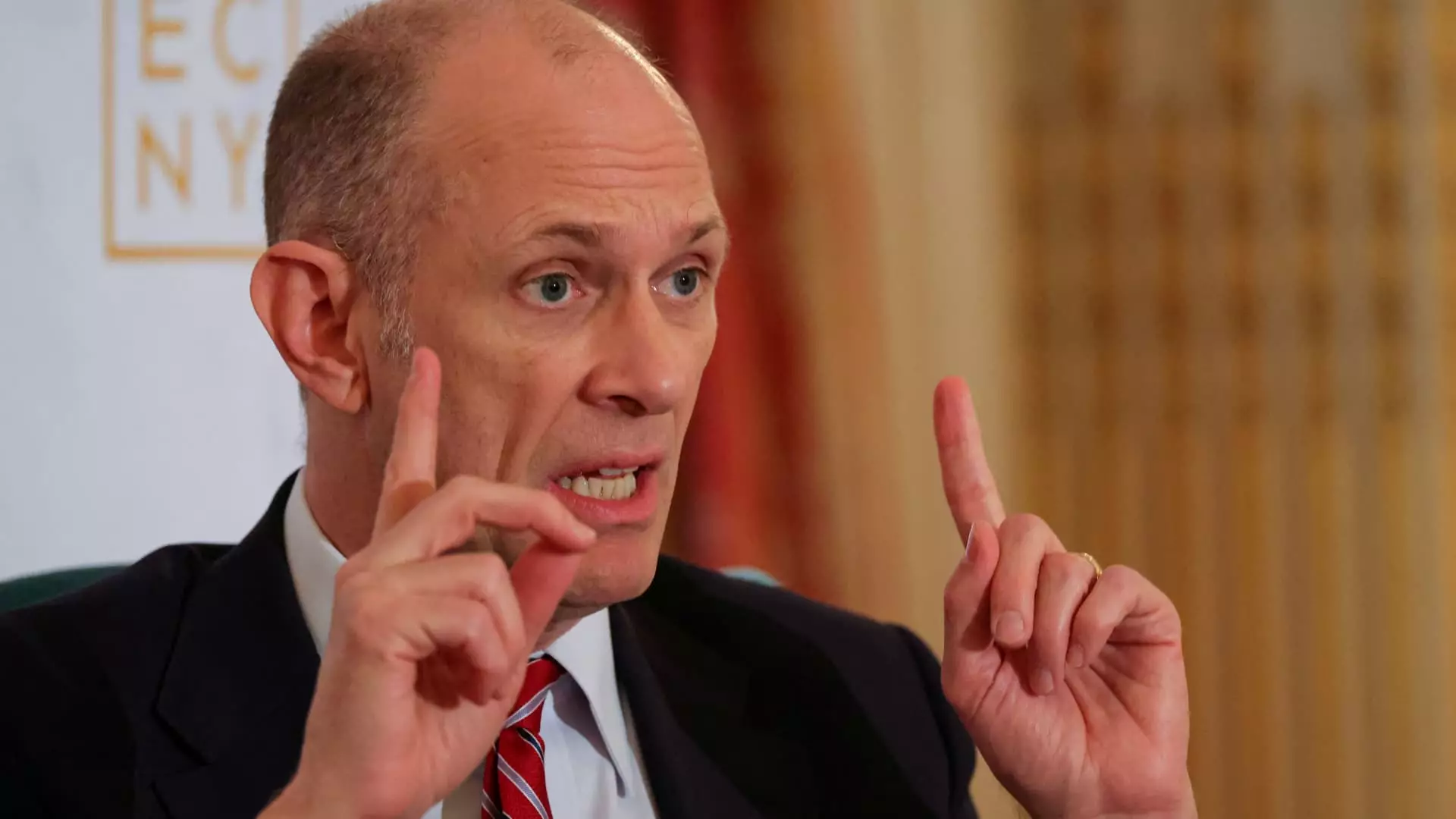The complexities of international trade can leave even the most seasoned economic analysts scratching their heads, especially when the stakes involve aggressive tariff strategies like those championed by former President Donald Trump. As Chicago Federal Reserve President Austan Goolsbee has indicated, Trump’s recent proposals to impose hefty tariffs threaten to upend the economic equilibrium, complicating the already precarious balance of monetary policy. Goolsbee’s assertions resonate with the weight of uncertainty that looms in the backdrop of fiscal and trade policy decisions—a phenomenon that historians may well consider a defining characteristic of Trump-era economics.
With Trump demanding a staggering 50% tariff on European Union products and a 25% tariff on iPhones produced outside of the U.S., the immediate impact on specific sectors is apparent. Such a move is not merely about retaliating against trade partners; it’s a bold tactic that could spawn a recessionary ripple effect in the broader economy. Goolsbee’s cautionary stance—that an atmosphere of stagflation could become the Federal Reserve’s worst nightmare—highlights the precarious state of economic stability. Efforts to boost job creation and stimulate growth risk being thwarted by decisions that seem impulsive and politically motivated rather than rooted in sound economic theory.
The Perils of Monetary Policy in a Trade War
Goolsbee’s reflections on the Federal Reserve’s interest rate trajectory reveal a notable tension. In an environment where interest rates are at a critical juncture, with predictions leaning toward cuts, the aggressive tariff proposals force the Fed to adopt a wait-and-see approach. The phrasing that “everything’s always on the table” suggests a delicate balancing act that Goolsbee and his colleagues must perform. This strategy of careful deliberation reflects the reality that a hasty decision could result in inflating unemployment rates or triggering unwanted inflation—factors fundamentally detrimental to the economy they aim to support.
In the face of this uncertainty, the Federal Reserve is often viewed as the economic stabilizer in turbulent times, striving to maintain household and business confidence. However, the Fed’s traditionally non-partisan role clashes with Trump’s mercurial approach to economic governance. The ability of central bankers to maneuver through a landscape overshadowed by political theatrics becomes increasingly complicated. Goolsbee’s candid admission that uncertainty affects policy decisions must raise alarms: When political whims dictate economic policy, the longstanding principles of fiscal responsibility may find themselves under siege.
A Silver Lining Amid Economic Chaos
Despite the darker assessments of current situations, there is a glimmer of hope that Goolsbee’s comments convey—the possibility of a return to sound economic growth. It is somewhat reassuring to hear the Fed President assert that the underlying trajectory remains optimistic, even amidst tariff threats. This sentiment suggests that if the Federal Reserve can weather this storm of unpredictability, a path toward reduced interest rates could be in play within the next 10 to 16 months.
This optimistic outlook, however, is tempered by the acknowledgment that the Federal Reserve cannot afford to make rash commitments during such turbulent times. Goolsbee’s trepidation over tying the Fed’s hands underscores that the economic environment will continue to evolve as external factors—including trade negotiations—unfold. The fragile nature of such predictions reinforces the ongoing need for agile, adaptable monetary policy that can respond to real-time changes—not only from market forces but also from the political landscape.
In a modern context, the crux of the Federal Reserve’s dilemma lies in balancing immediate trade repercussions with long-term economic health. The tariff-induced chaos could obscure paths to lower rates that hail beneficial for the labor market and the economy at large. The question remains, how will policymakers navigate these uncharted waters where political maneuvering interferes with foundational economic tenets? While Goolsbee’s sentiments express hope, the reality remains that the road ahead is fraught with complications, and the stakes could not be higher.


Leave a Reply